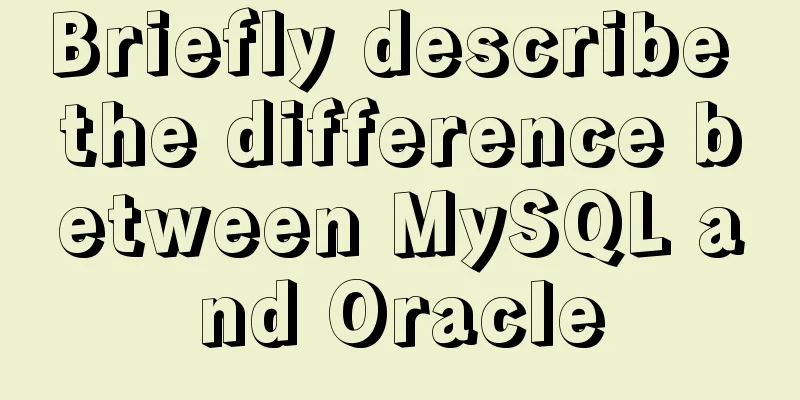Detailed explanation of mandatory and implicit conversion of types in JavaScript

1. Implicit conversionWhat is the result of executing the following statement?
A. undefined == null
B. isNaN("100")
C. parseInt("1a") === 1
D. [ ] instanceof Array
Answer:
Conversion in double equalsAfter warming up, let's look at a piece of code:
if ([]) {
console.log(true);
}
The result is true. In fact, [] is false, because when comparing equal signs, if one side is a Boolean value, the data on both sides will be converted to Number first. Number([]); // 0 Number(false); // 0 Therefore [] is false. However, when making an if statement, the data will be converted to Boolean type. Right now: Boolean([]); // true So it can output true. Summarize some techniques for double equal sign judgment:
Boolean Type Conversion
var test = new Boolean();
console.log(test);
var test = new Boolean(0);
console.log(test.valueOf());
var test = new Boolean(null);
console.log(test.valueOf());
var test = new Boolean("");
console.log(test.valueOf());
var test = new Boolean(NaN);
console.log(test.valueOf());
The answer is:
Here’s how it works:
"+" and "-"
console.log(1 + "2" + "2");
console.log(1 + +"2" + "2");
console.log("A" - "B" + "2");
console.log("A" - "B" + 2);
What is the output? The result is: 122 32 NaN2 NaN Analysis:
2. Forced type conversionFor the code var a = 10.42; to extract the integer part of a, which of the following codes are correct?
A. parseInt( a );
B. Math.floor( a );
C. Math.ceil( a );
D. a.split('.')[0];
Answer: AB Many people will choose ABC at a glance. Analysis: A. parseInt converts to an integer, the default is decimal, and the result is 10; B. floor is rounded down, the result is 10 - floor means floor, rounding down, to help memory; C. ceil is rounded up, and the result is 11; D. The split operand must be a regular expression or a string, otherwise TypeError is raised. new String with ' 'Which of the following are true?
A. 'foo' == new function(){ return String('foo'); };
B. 'foo' == new function(){ return new String('foo'); };
C. [] == 0
D. ![]
E: !0
Answer: A: Let me explain in detail below; B: Let me explain in detail. According to our summary of the double equal sign, when one side of the double equal sign is a Boolean value, both sides will be converted to the Number type. Therefore, when the console tests empty object == true or === true, it is actually executing empty object == 1 or === 1, so it returns false. Therefore, if you want to verify that the object is always equal to true, you should use !{} and !!{} !{}; // false; !!{}; // true E: Since Boolean(0) == false, !0 = true, which is correct. Let's talk about option AB. Due to the use of the new keyword and the call of the function constructor, the result is unexpected. First of all, we need to know that when a constructor is called with new, if a reference object (array, object, function, etc.) is returned internally, the anonymous object created by new will be overwritten. If a primitive type is returned (when there is no explicit return, undefined is actually returned), then the anonymous object created by new is returned. It seems that In option A, the constructor returns a string, so the final constructor returns an anonymous object created by new, which is an empty object. In option B, a string object is returned inside the constructor, so the final constructor returns this object. SummarizeThis is the end of this article about mandatory and implicit type conversions in JavaScript. For more information about mandatory and implicit type conversions in JavaScript, please search previous articles on 123WORDPRESS.COM or continue to browse the following related articles. I hope you will support 123WORDPRESS.COM in the future! You may also be interested in:
|
<<: Detailed explanation of viewing and setting SQL Mode in MySQL
>>: How to install openssh from source code in centos 7
Recommend
How to install Postgres 12 + pgadmin in local Docker (support Apple M1)
Table of contents introduce Support Intel CPU Sup...
Perfect solution to the problem of Windows Server 2012 or 2016 failing to install .NET Framework 3.5 without disk
Problem Description When using Windows Server 201...
CSS delivery address parallelogram line style example code
The code looks like this: // Line style of the pa...
Example of using nested html pages (frameset usage)
Copy code The code is as follows: <!DOCTYPE ht...
MySQL database migration quickly exports and imports large amounts of data
Database migration is a problem we often encounte...
CentOS 7 switching boot kernel and switching boot mode explanation
centos7 switch boot kernel Note: If necessary, it...
Detailed example of getting the maximum value of each group after grouping in MySQL
Detailed example of getting the maximum value of ...
Detailed steps to install RabbitMQ in docker
Table of contents 1. Find the mirror 2. Download ...
Automatically install the Linux system based on cobbler
1. Install components yum install epel-rpm-macros...
How to install MySQL 5.7.28 binary mode under CentOS 7.4
Linux system version: CentOS7.4 MySQL version: 5....
vue-cli configuration uses Vuex's full process record
Table of contents Preface Installation and Usage ...
Implementation code for infinite scrolling with n container elements
Scenario How to correctly render lists up to 1000...
Detailed steps to build the TypeScript environment and deploy it to VSCode
Table of contents TypeScript environment construc...
Detailed explanation of Docker compose orchestration tool
Docker Compose Docker Compose is a tool for defin...
Installation tutorial of docker in linux
The Docker package is already included in the def...









